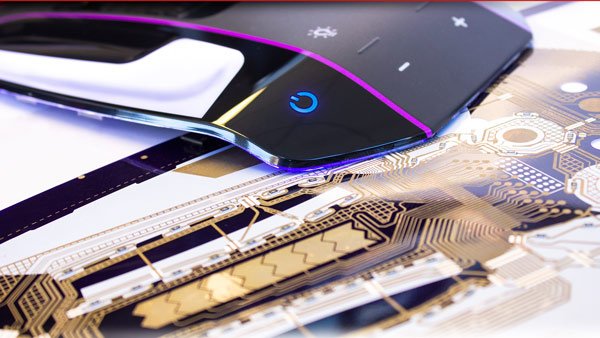TactoTek And Essemtec: Printed Electronics (Case Study)
Qualified
A first design is finished, a complete explanation of the targeted functionality is included, and the targeted printer technology has been provided. This AME design also provides a model which is proven to fulfill the targeted functionality. Furthermore, the AME structure has been printed and validated by measurements. A complete set of the measurement setup and results is provided. This AME design is part of a system that has reached product level and has passed a specified set of environmental tests. The specifications of the performed tests and the results are provided.

Printed electronics have gained significant acceptance in the electronics industry due to its versatile functionalities in various manufacturing processes.
Transforming Electronics with IMSE Technology: A Case Study on TactoTek
In recent years, printed electronics has gained enormous acceptance in the electronics industry. This is mainly due to the new technology's functionalities, which are feasible in conventional and other manufacturing processes. These are for example less costly production costs, simple production process, thin and light, flexible and stretchable, robust, and recyclable.
A case study of the company TactoTek, which has developed the IMS (In-Mold Structural Electronic) technology based on printed electronics, will be used to explain the film process in detail. Proven Essemtec All-in-One equipment is used worldwide in the production of printed electronics for many applications.
The electronic design process will be re-defined based on the IMSE technology from TactoTek. With this 3D technology, developers can get rid of mechanical buttons and switches, and complex multi-part electronics assemblies and replace them with one-piece solutions that are thin, light, beautiful, and strong, without compromising functionality. In addition to simplifying electronics integration and enabling new use cases, IMSE parts typically reduce weight by 70% or more, and wall thickness can be as slim as 2 mm. Studies show that this new technology has huge growth potential across many industries, including automotive, appliances, IoT, and industrial solutions, to name a few.
TactoTek IMSE solutions integrate a mixture of well-known production technologies into a unique solution that enables mass production of 3D structural electronics. Core IMSE production technologies include flexible circuit printing, surface mounting electronic components, thermoforming, in-mold labeling, and injection molding. chose Essemtec as their business partner for the key production processes of pick & place and dispensing solutions. In addition to using Essemtec equipment in their own production, TactoTek™ is recommending Essemtec to their licensed manufacturers who produce IMSE solutions globally.
TactoTek IMSE solutions integrate a mixture of well-known production technologies into a unique solution that enables mass production of 3D structural electronics. Core IMSE production technologies include flexible circuit printing, surface mounting electronic components, thermoforming, in-mold labeling, and injection molding.
TactoTek starts with in-mold labeling (IML) material, or another suitable material, such as natural wood veneer. Decoration, if desired, is then printed. This is followed by printing electronics, including conductive circuitry and, in some designs, touch controls and antennas, too. Electronic components, such as LEDs for illumination, are mounted using standard high-speed pick-and-place machinery. Electronics are fixed to the mounting surface using specialized adhesives able to withstand the temperature and pressure associated with injection molding.
With the electronics in place, the electronics carrier is used as an insert for injection molding. Typical molding materials include high-pressure, high-temperature plastics such as polycarbonate (PC), acrylic (PMMA), acrylonitrile butadiene styrene (ABS), and, for flexible designs, thermoplastic polyurethane (TPU).
Some of the building blocks that can be molded within IMSE parts include:
- Circuitry - printed flexible circuitry and wiring harness
- Lighting - single/multi-color indicators, ambient lighting, logo/branding, animated lighting
- Controls - printed capacitive touch controls molded into plastic surfaces for 1D, 2D, and 3D controls
- Sensors - ambient light, impact, stress, proximity, accelerometer
- Antennas - NFC, Bluetooth/ WLAN antenna
- Integrated Circuits - MCU, BL
What are the main benefits of the IMSE technology?
Design freedom
Include new functions, create innovative shapes, and add electronic functionality in new locations when traditional design constraints are eliminated.
Durability & protection
Encapsulating printed electronics and components within plastics seals systems from moisture and debris and protects them from shock and vibration.
Space-saving technology
TactoTek in-mold electronics have a typical wall thickness of 2-4 mm and do not require the depth of multi-part assemblies including light pipes and full-size PCBs.
Excellent touch performance
Deliver superior performance by locating touch sensors as close as 0.15 mm from the user; systems can be designed for reliable use even with leather gloves.
Lightweight
TactoTek™ structures are molded using standard plastics and eliminate multiple structural elements found in typical electronics designs typically reducing weight by 70% or more.
Simple assembly
TactoTek in-mold electronics integrate many electronic functions within cosmetic parts. This reduces the number of parts and simplifies assembly.
TactoTek has chosen Essemtec as their business partner for the key production processes of both pick and place and dispensing solutions. Essemtec will deliver their systems to both TactoTek’s own production sites globally as well as to TactoTek’s licensed manufacturers who will mass produce TactoTek IMSE solutions worldwide. Current forecasts show that through 2025 300-400 Essemtec systems will be needed to cover production demand. TactoTek selected Essemtec equipment because of their commitment to advancing IMSE technology and optimizing the IMSE manufacturing process, and the manufacturing efficiencies of combining pick and place in conjunction with highly advanced dispensing on the same system platform.




